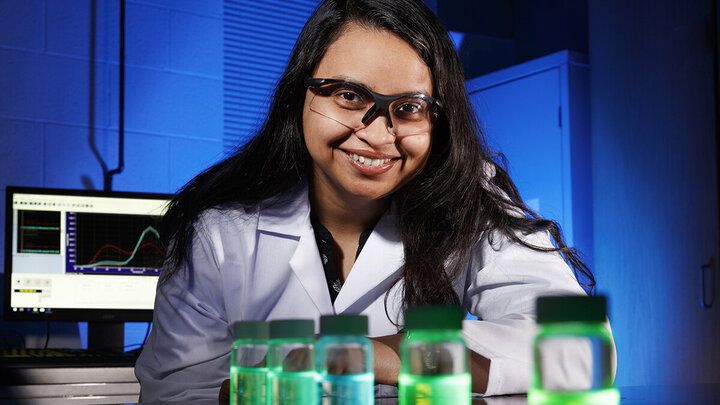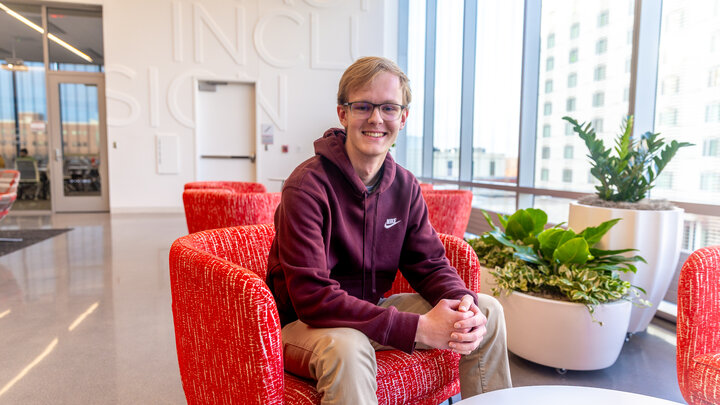As technologies like virtual reality, smart health applications and digital twinning take hold, the demand for wireless and broadband connectivity continues to boom. To meet the ever-growing need for bandwidth, a Husker computer scientist is using an $812,995 grant from the National Science Foundation's Faculty Early Career Development Program to unlock the potential of a lesser-trafficked portion of the electromagnetic spectrum.
Shuai Nie, assistant professor of computing, will use the five-year grant to explore how to open the terahertz frequency range to everyday users transmitting wireless data. By opening access to an underutilized band of communication, Nie will help ameliorate spectrum scarcity and begin to close the digital divide — the term describing unequal access to digital technology. She's particularly focused on boosting connectivity in rural areas, where internet access is especially scarce.
"Most of the time, when people are talking about advanced technologies, they're referring to utilization in cities, since cities have more residents and more traffic," Nie said. "But for the majority of Nebraska and other rural areas, wireless connectivity, let alone broadband access, is an issue. Farmers and other rural businesses don't enjoy the fast connectivity that their urban counterparts take for granted."
That divide is represented in the Bureau of Sociological Research's most recent Nebraska Snapshot, with only 26% of Nebraskans living on a farm or in open country reporting access to dependable internet. In contrast, 50% of those living in a town or city reported having very dependable internet.
Nie's CAREER grant will establish the Midwest's first testbed to measure and test terahertz-frequency networks, which are expected to be a key component of sixth-generation wireless technology, or 6G. The new equipment will allow Nie's group and Husker students to develop and test the mathematical models and algorithms that will enable terahertz channels to operate smoothly despite an environment that is constantly evolving: Factors like weather fluctuations and crop growth, which changes the plants' shape and height, are capable of influencing the terahertz networks.




